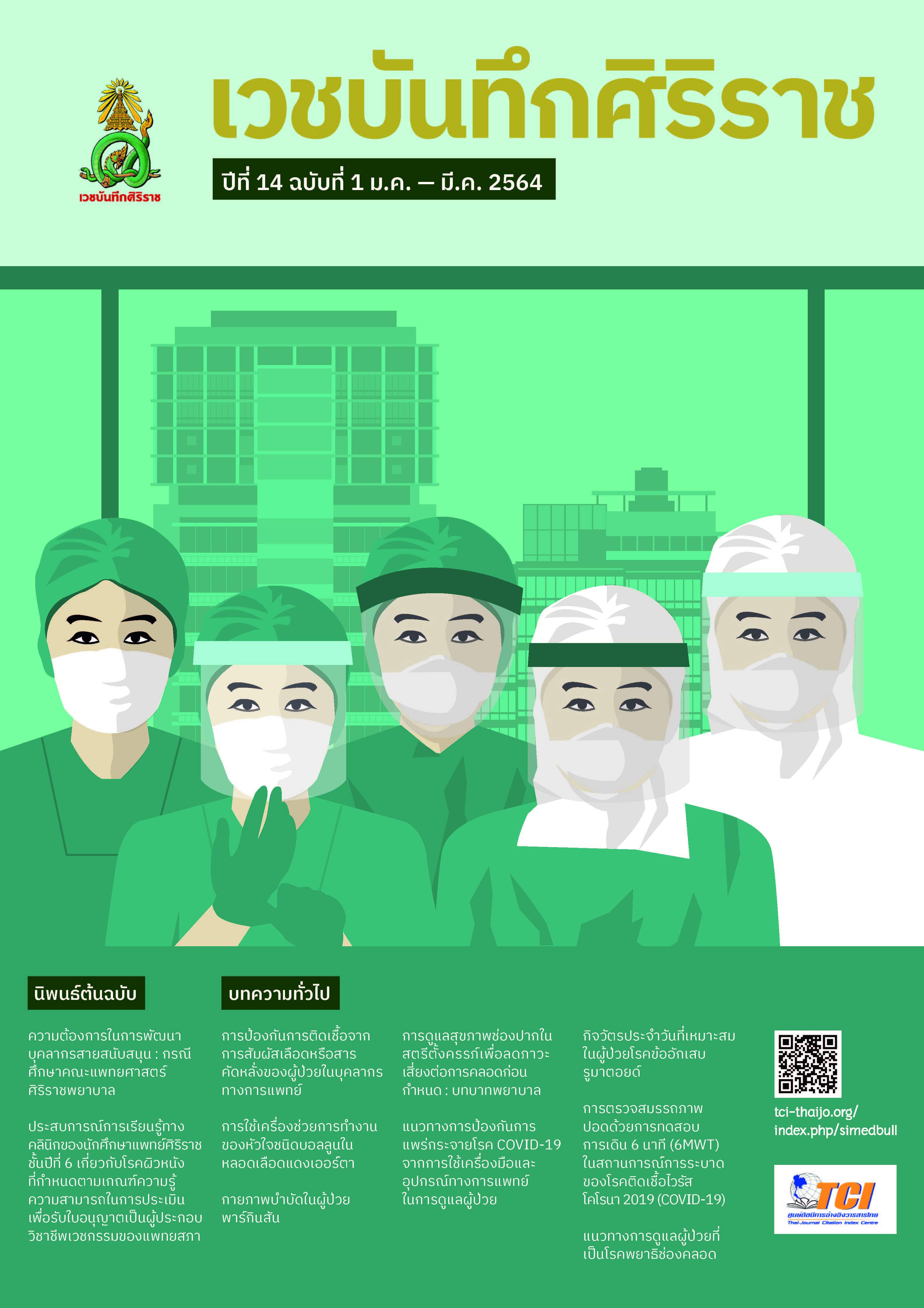Physical Therapy Management in Patients with Parkinson’s Disease
Main Article Content
Abstract
Parkinson's is a degenerative disease of the nervous system. The prevalence of Parkinson 's disease in Thailand was 242.57 per 100,000 populations in 2008-2011.Prevalence increased with age figures were 1.0 % for those aged over 60 years. The symptoms usually emerge slowly and, as the disease worsens, non-motor symptoms become more common. The most obvious early symptoms are resting tremor, rigidity, postural instability, slowness of movement and difficulty with walking Other symptom include sensory, impaired cognition, depression, sleep disorders, easily weakened, excretory system disorders and mental disorders.
Physical exercise to maintaining walking, balance and improve many PD symptom. These benefits are supported by research. The Parkinson’s outcomes Project shows that people with PD who start exercising earlier and a minimum of 2.5 hours a week, experience a slowed decline in quality of life compared to those who start later. Physical Exercise for Parkinson’s disease can be divided into 3 types: 1. resistance to exercise, 2. Increase endurance without resistance, 3. Increase stability. Recent research suggests that physical therapy including gait and balance training, resistance training and regular exercise may help improve or hold the symptoms of PD at bay. Physical therapy treatment should be administered during the peak effective time of each individual medication.
Article Details
References
2. ผศ.นพ.รุ่งโรจน์ พิทยศิริ, ศ.นพ.กัมมันต์ พันธุมจินดา, ศ.กิตติคุณ พญ.ท่านผู้หญิง ศรีจิตรา บุนนาค.โรคพาร์กินสันรักษาได้.3.กรุงเทพ;ศุนย์รักษาโรคพาร์กินสันและกลุ่มโรคความเคลื่อนไหวผิดปกติโรงพยาบาลจุฬาลงกรณ์สภากาชาดไทย;2550
3. คณะเทคนิคการแพทย์ มหาวิทยาลัยเชียงใหม่. คู่มือและโปรแกรมการฝึกออกกำลังกายเพื่อเพิ่มสมรรถภาพทางกายสำหรับผู้ป่วยพาร์กินสัน.1.เชียงใหม่;มหาวิทยาลัยเชียงใหม่;2549
4. Lilian T.B. Gobbi, Maria D.T. Oliveira-Ferreira, M. Joana D. Caetano, Ellen Lirani-Silva,Fabio A. Barbieri, Florindo Stella, Sebastiao Gobbi. Exercise programs improve mobility and balance in people with Parkinson’s disease . Parkinsonism and Related Disorders 2009;15: 49-52.
5. Madeleine E.Hackney,Gammon M. Earhart. Tai Chi improves balance and mobility in people with Parkinson disease .Gait and Posture 2008;28:456-460.
6. C. Duchesne, O. Lungu, A. Nadeau, M.E. Robillard, A. Bore, F. Bobeuf, A.L. Lafontaine, F. Gheysen, L. Bherer, J. Doyon. Enhancing both motor and cognitive functioning in Parkinson ‘s disease : Aerobic exercise as a rehabilitative intervention. Brain and Cognition 2015;99:68-77.
7. Joanne Shanahan, Meg E Morris, Orfhlaith Ni Bhriain, Daniele Volpe, Amanda M Clifford. Dancing and Parkinson’s disease : updates on this creative approach to therapy. Journal of Parkinsonism and Restless Legs Syndrome 2017;7:43-53.
8. Alessandro Picelli, Camilla Melotti, Francesca Origano, Andreas Waldner, Raffaele Gimigliano, Nicola Smania. Does robotic gait training improve balance in Parkinson’s disease ? A randomized controlled trail. Parkinsonism and Related Disorders 2012;18:990-993.


